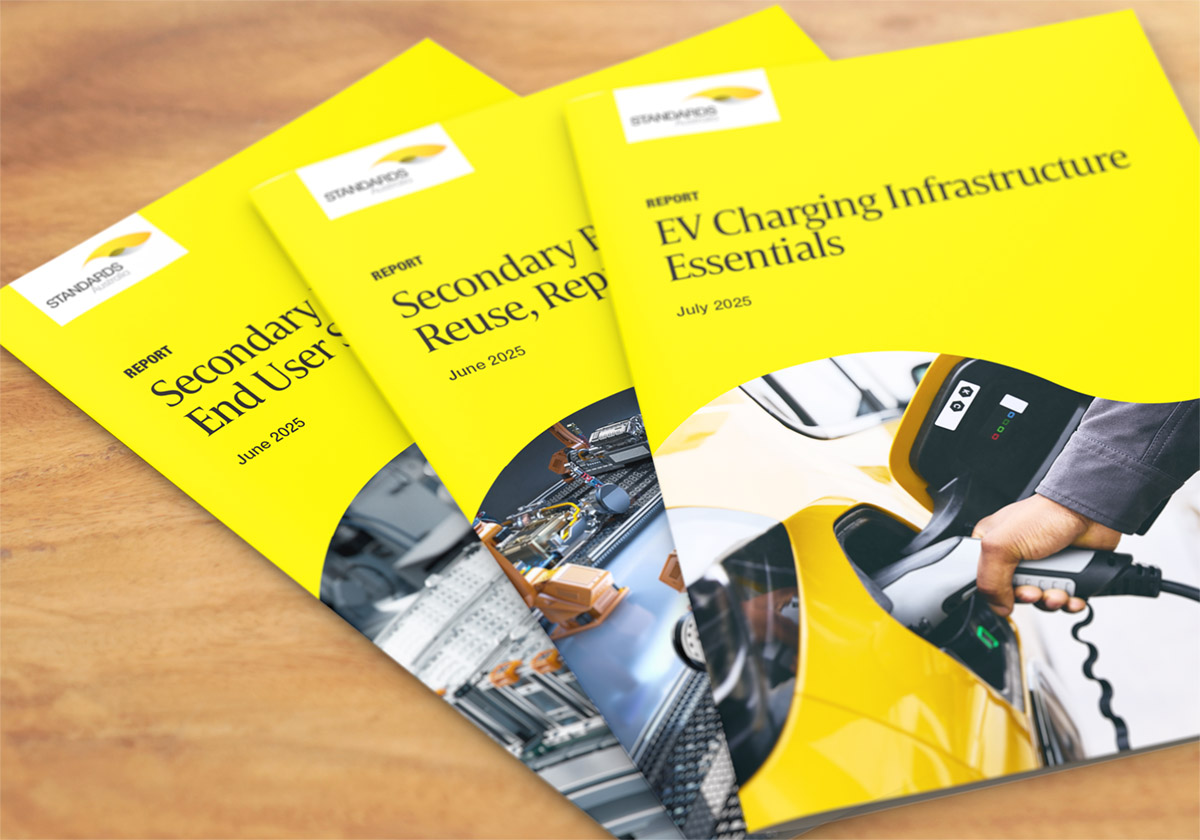Australia Releases Battery Best Practice Guide for Flow Batteries
Statements
Australia’s long-standing leadership in flow battery technology has reached a new milestone with the release of the battery best practice guide for flow batteries titled Flow Battery Energy Storage – Guidelines for Safe and Effective Use. Developed in collaboration with industry experts, government stakeholders, and Standards Australia, this guide considers best practices across key aspects of the flow battery lifecycle, including system design, installation, operation, and maintenance.
Flow batteries are recognised globally for their long-duration energy storage capabilities, safety profile, and suitability for stationary storage applications. This guide supports Australia's ambitions to be at the forefront of energy innovation and reinforces the importance of storage technologies in accelerating the energy transition.
A Proud Legacy, A Practical Future
Australia is the birthplace of the vanadium redox flow battery, developed in the 1980s by a team at the University of New South Wales. Four decades later, Australia continues to lead, with new manufacturing initiatives in Townsville, emerging commercial deployments across the country, and now, this new best practice guide to support safe and consistent system installation, operation and maintenance.
What the Guide Covers
The guide provides practical recommendations and safety considerations tailored to flow battery technologies, including:
- Protection against hazards
- Verification and test requirements
- Information and marking requirements
- Electrical energy storage system safety compliance
- Transport, handling and storage
- Installation and commissioning
- Operations and maintenance
- Decommissioning and end-of-life
The guide is suitable for use by system integrators, installers, energy planners, regulators, and end-users, and is especially timely as flow batteries scale up across utility (grid connection), industrial, and microgrid applications.
A National Approach for a Growing Industry
Adam Stingemore, Chief Development Officer at Standards Australia, stated: “This new guide will serve as a critical resource for the industry, focusing on the installation, maintenance, safety, and end-of-life management of rechargeable flow batteries. Developed with industry experts, it reflects current trends and challenges in the deployment of the rapidly growing flow battery market.
The release of this guide reflects Australia’s continued leadership in advanced battery technology and our commitment to supporting the safe deployment of emerging energy solutions. As energy storage becomes a critical enabler of Australia’s renewable energy goals, clear and consistent best practices are essential.”
The guide complements the Australian Government’s National Battery Strategy and responds directly to calls from industry and the clean energy sector for clearer guidance on the practical deployment of newer battery chemistries.
Driving the Energy Transition Through Industry-Led Innovation
Standards Australia is evolving how it works with industry to help fast-track solutions that underpin the clean energy transition. Recognising the urgent need for safe, scalable energy technologies, Standards Australia is introducing new pathways to accelerate standards development by working directly with innovators, manufacturers, and clean energy stakeholders to identify emerging challenges and co-develop practical guidance.
“Our role is shifting from being a standards setter to being an enabler of strategic industry outcomes,” said Adam. “By partnering earlier in the technology lifecycle, we’re helping ensure that standards support innovation, not lag behind it.”
The release of Flow Battery Energy Storage – Guidelines for Safe and Effective Use is a case in point: developed through an agile process involving technical experts, installers, and government, it responds rapidly to the real-world needs of a growing battery sector by providing clarity where formal standards may still be under development.
These efforts align with Australia’s broader energy goals, including the National Battery Strategy and Net Zero 2050 targets, and position Standards Australia as a critical partner in delivering safe, future-ready infrastructure.
Access the Guide
🔗 Download the Flow Battery Energy Storage – Guidelines for Safe and Effective Use

Australia’s long-standing leadership in flow battery technology has reached a new milestone with the release of the battery best practice guide for flow batteries titled Flow Battery Energy Storage – Guidelines for Safe and Effective Use. Developed in collaboration with industry experts, government stakeholders, and Standards Australia, this guide considers best practices across key aspects of the flow battery lifecycle, including system design, installation, operation, and maintenance.
Flow batteries are recognised globally for their long-duration energy storage capabilities, safety profile, and suitability for stationary storage applications. This guide supports Australia's ambitions to be at the forefront of energy innovation and reinforces the importance of storage technologies in accelerating the energy transition.
A Proud Legacy, A Practical Future
Australia is the birthplace of the vanadium redox flow battery, developed in the 1980s by a team at the University of New South Wales. Four decades later, Australia continues to lead, with new manufacturing initiatives in Townsville, emerging commercial deployments across the country, and now, this new best practice guide to support safe and consistent system installation, operation and maintenance.
What the Guide Covers
The guide provides practical recommendations and safety considerations tailored to flow battery technologies, including:
- Protection against hazards
- Verification and test requirements
- Information and marking requirements
- Electrical energy storage system safety compliance
- Transport, handling and storage
- Installation and commissioning
- Operations and maintenance
- Decommissioning and end-of-life
The guide is suitable for use by system integrators, installers, energy planners, regulators, and end-users, and is especially timely as flow batteries scale up across utility (grid connection), industrial, and microgrid applications.
A National Approach for a Growing Industry
Adam Stingemore, Chief Development Officer at Standards Australia, stated: “This new guide will serve as a critical resource for the industry, focusing on the installation, maintenance, safety, and end-of-life management of rechargeable flow batteries. Developed with industry experts, it reflects current trends and challenges in the deployment of the rapidly growing flow battery market.
The release of this guide reflects Australia’s continued leadership in advanced battery technology and our commitment to supporting the safe deployment of emerging energy solutions. As energy storage becomes a critical enabler of Australia’s renewable energy goals, clear and consistent best practices are essential.”
The guide complements the Australian Government’s National Battery Strategy and responds directly to calls from industry and the clean energy sector for clearer guidance on the practical deployment of newer battery chemistries.
Driving the Energy Transition Through Industry-Led Innovation
Standards Australia is evolving how it works with industry to help fast-track solutions that underpin the clean energy transition. Recognising the urgent need for safe, scalable energy technologies, Standards Australia is introducing new pathways to accelerate standards development by working directly with innovators, manufacturers, and clean energy stakeholders to identify emerging challenges and co-develop practical guidance.
“Our role is shifting from being a standards setter to being an enabler of strategic industry outcomes,” said Adam. “By partnering earlier in the technology lifecycle, we’re helping ensure that standards support innovation, not lag behind it.”
The release of Flow Battery Energy Storage – Guidelines for Safe and Effective Use is a case in point: developed through an agile process involving technical experts, installers, and government, it responds rapidly to the real-world needs of a growing battery sector by providing clarity where formal standards may still be under development.
These efforts align with Australia’s broader energy goals, including the National Battery Strategy and Net Zero 2050 targets, and position Standards Australia as a critical partner in delivering safe, future-ready infrastructure.
Access the Guide
🔗 Download the Flow Battery Energy Storage – Guidelines for Safe and Effective Use

Email:

Email:


